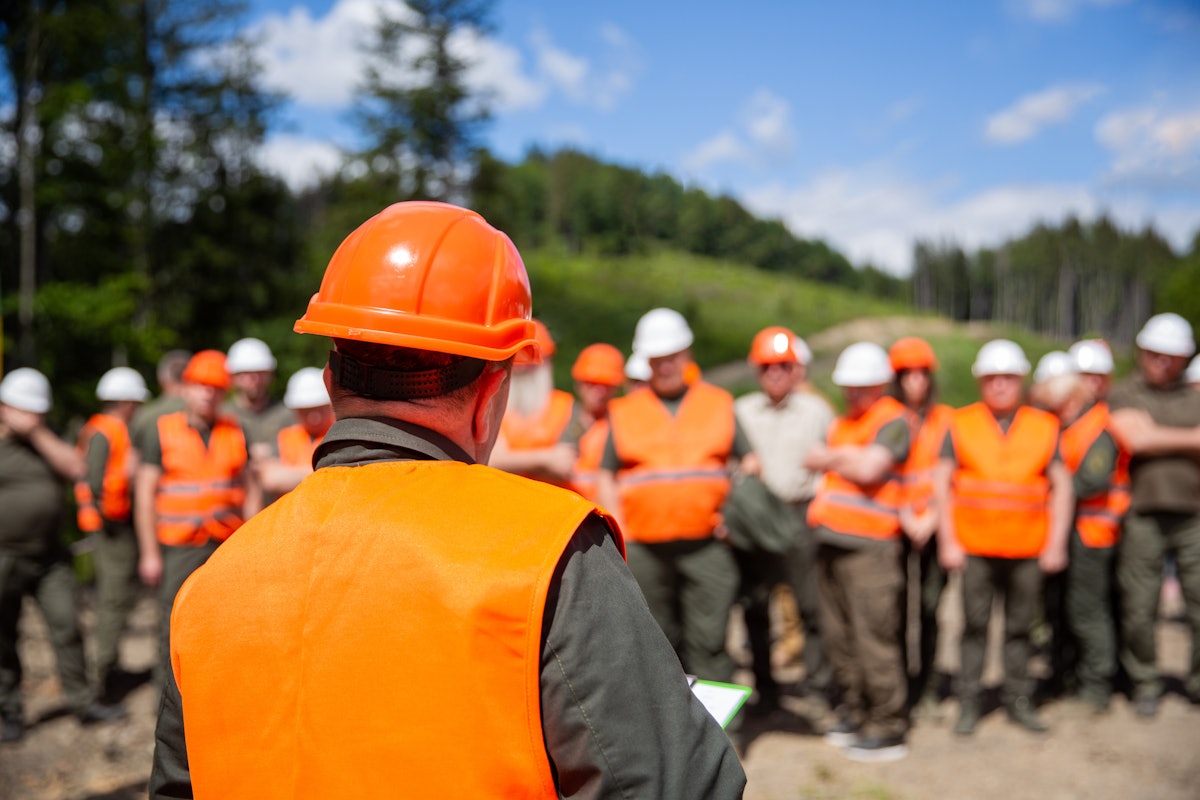Staffing construction projects can be challenging year-round, but summer poses additional difficulties. The heat isn’t the only factor that complicates staying on schedule and within budget — longer workdays and increased competition for labor can also be concerning. However, with adequate preparation and enhanced flexibility, you can establish a construction workforce that remains effective throughout the summer and beyond.
Expect The Usual Hiring Struggles
For construction employers and supervisors, aside from planned vacations, summer projects can be exceedingly busy. The silver lining is that many summer staffing complexities are predictable.
It’s not exactly breaking news that finding skilled labor isn’t easy in today’s labor market. However, as we enter the summer months, more projects are launched and the demand grows for electricians, mechanics, HVAC technicians and other skilled workers. They aren’t just being sought by competing construction companies, employers in manufacturing, facilities management and other industries also need skilled labor and they might be able to offer preferable working conditions.
This time of year also brings unique health and safety concerns. Ensuring workers stay hydrated throughout the day, take their necessary breaks and use the proper personal protective equipment is a large task. No one wants to put people in unsafe conditions as the consequences can be severe.
The spike in productivity can play out differently depending on where your projects are located. In the southern U.S. or areas where higher temperatures are more common, summer brings heat that can be unbearable and finding workers willing to work in these conditions is a daunting task. For construction companies further north where projects may have been shut down for the winter, it may be easier to find people willing to work construction, but they’ll have several job opportunities to choose from as projects commence.
Anticipate New Challenges This Summer
In addition to previously mentioned challenges, staffing your construction project could be more difficult this summer due to several factors. The current economic climate, including tariffs and regulations, creates uncertainty that could impact supply chains and project planning. This may affect the availability of materials and the ability to maintain project timelines.
Although the full extent of this unpredictability is not yet clear, it can create difficulties in securing a reliable workforce. Fluctuating project timelines and uncertain supply chains can disrupt planning and hinder the recruitment and retention of skilled labor.
Prepare, Stay Flexible and Network
Staffing your projects this summer is going to be tough. You’ll be dealing with some obstacles that you’ve overcome before, but you also need to factor in how you can best maintain your workforce considering the current economic landscape.
The task can be challenging, but by steering clear of common mistakes, utilizing flexible working arrangements and addressing the main motivators of job seekers, you can improve the likelihood of meeting your business goals.
Prioritize Pre-Construction Planning
Pre-construction planning is a crucial phase that sets the foundation for successful project execution. In my experience, thorough early preparation allows organizations to anticipate workforce needs more effectively, ensuring that resource allocation is strategically planned. By working with a staffing partner with proven expertise in this phase, companies can gain valuable insights into labor market trends and receive guidance on attracting and retaining top-notch talent. This proactive planning helps mitigate potential staffing pitfalls and ensures that projects are well-staffed from the beginning, leading to smoother operations and better outcomes. An improved understanding of your needs and the conditions of the labor market can also help you prepare for concerns caused by economic uncertainty.
This is also a great time to plan for any alternative conditions that can impact your project. Are you going to need to staff more workers to avoid burning out workers during the longer days? Will you need to adjust your onboarding process to better communicate your health and safety efforts to those who may not be used to working in the heat? Answering questions like these can help you avoid making mistakes we commonly see this time of year.
Address Job Seekers’ Primary Motivators
Understanding what workers are looking for and how you can meet their motivations is a year-round approach that consistently pays off. At Aerotek we conduct a quarterly Job Seeker Survey to help us monitor trends in worker motivations and sentiment. This helps our partners keep a pulse on how to improve their staffing strategies. According to our data, pay and job security are consistently the key factors for job seekers accepting a new role. Pay may not be a surprising primary motivator, but over the last year we’ve seen job security consistently close the distance and ideas like career advancement and learning new skills are also considered highly important.
To effectively address these motivators, construction companies must prioritize creating a stable and secure working environment, offer competitive compensation packages and invest in upskilling opportunities to not only attract new workers, but retain those already on their teams.
Build Local Relationships
Although working locally to identify and cultivate talent within your community may not produce immediate results by this summer, it is a crucial long-term strategy for filling more skilled positions. We’ve found great success in collaborating on the national level with organizations like SkillsUSA to bridge the skills gap in the labor market. Community colleges, trade and vocational schools are important regional organizations that help you connect with your future workers. Establishing these partnerships is instrumental in creating pathways for entry-level workers to pursue secondary education and trades programs, allowing them to upskill and become integral members of our workforce.
This summer, navigating the complexities of workforce management in the construction industry will require a multifaceted approach. By prioritizing pre-construction planning, addressing the primary motivators of job seekers and building local relationships, companies can strategically position themselves for success. The current economic landscape may present a few new concerns, but with the proper planning and flexibility, construction companies can better build a sustainable workforce.
View the original article and our Inspiration here


Leave a Reply